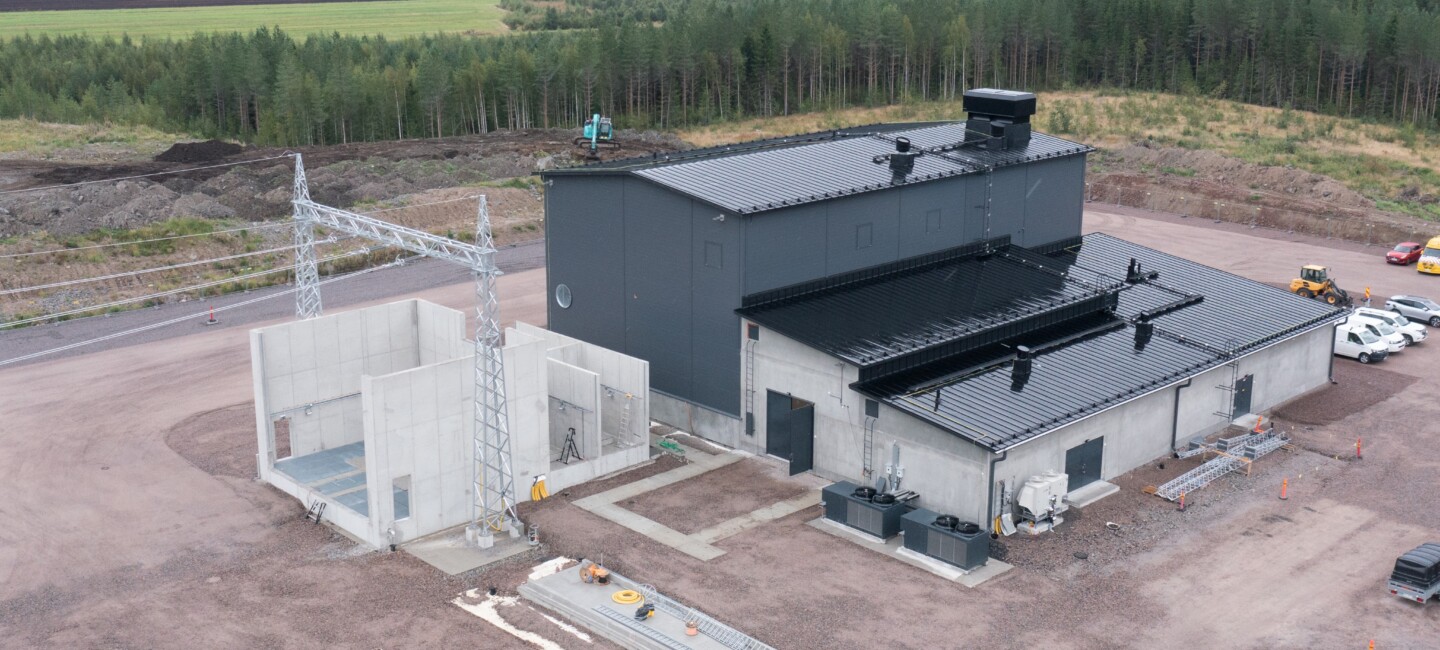Synchronous condenser balances wind power fluctuations in the grid

Wind power generation is increasing in Finland and volumes are growing rapidly, especially on the west coast. However, the large regional volume of wind power is challenging for the electricity system in terms of utilization. We are implementing Finland’s first synchronous condenser for Fingrid at the Jylkkä substation in Kalajoki, which will stabilize the electrical grid in an area with high levels of converter connected wind power.
In Ostrobothnia, a wind power cluster is being constructed with a capacity equivalent to the combined output of the Olkiluoto and Loviisa nuclear power plants. During high wind power generation, and especially during power grid outages the regional electricity grid may become unstable, and the regional electricity generation may have to be limited.
“With the synchronous condenser, we will improve the reliability of the grid on the west coast, which is becoming an important source of wind generated renewable energy. Destia has the expertise for challenging projects,” says Juha Pikkupeura, Project Manager at Fingrid.
A synchronous condenser is a large synchronous machine that operates without a prime mover, generating short-circuit power to the grid and stabilizing voltage fluctuations through its voltage regulation. The energy generated by wind power is connected to the grid via frequency converters which do not have the inherent grid-supporting characteristics of a synchronous machine. Unlike conventional power plants, the frequency converters do not react to changes in the grid’s frequency or voltage with intrinsically rotating masses.
In this project, we are responsible for the construction works and implementing the synchronous condenser, power transformer and control and automation systems utilizing our end-to-end expertise in construction of infrastructure, electric grids and substations. We are also responsible for the design as well as the commissioning and connecting the system to the network. We are also in charge of the foundation and earth works as well as their design and planning. In addition, we build the industrial shed, which will house the synchronous condenser, and the control room.
Fingrid will take the synchronous condenser into use in 2025.
